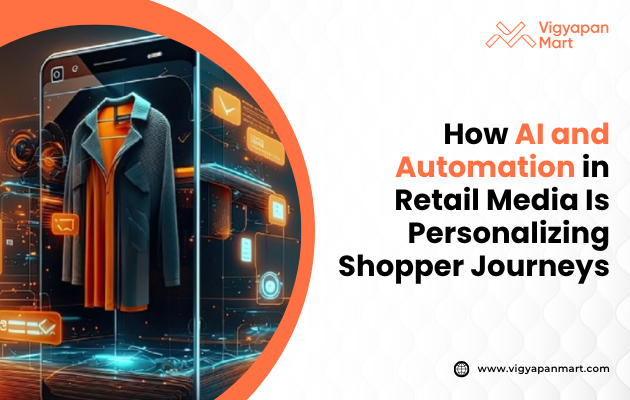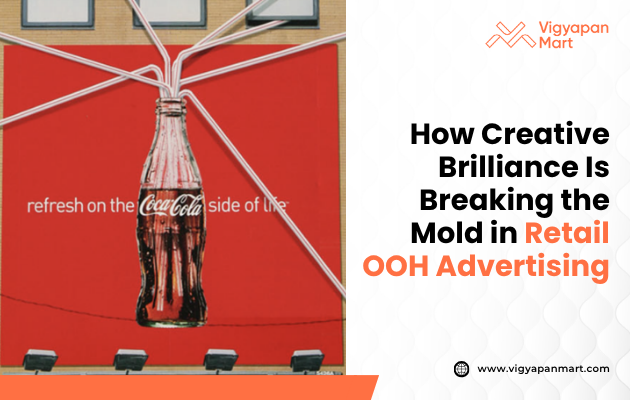The Power of Raw & Real Storytelling Narratives in Retail Advertising

Retail advertising has evolved significantly over the years. It has shifted from direct product promotion to creating emotional connections with customers. Storytelling is the heart of this transformation. It is a powerful tool that resonates deeply with audiences. When brands work with raw and real storytelling narratives, they can humanize their identity, build trust, and foster loyalty. This blog explores how authentic storytelling works in retail advertising and why it’s a game-changer.
Why Storytelling Matters in Retail Advertising?
Stories have been an integral part of human communication for centuries. They draw attention, hit emotions, and make the ads memorable. In retail advertising, storytelling achieves the following:
- Stories make a special emotional connection. For instance, Dove’s "Real Beauty" campaign resonated with millions by promoting self-acceptance and inclusivity.
- A compelling narrative makes a brand unique. Patagonia’s "Don’t Buy This Jacket" campaign highlighted environmental responsibility, aligning with conscious consumer values.
- Stories with real talks build trust. McDonald’s "Our Food. Your Questions" campaign demonstrated openness about food quality, boosting credibility.
- Memorable ads stick in consumers’ minds longer than plain facts. For example, TOMS’ "One for One" campaign perfectly shows social impact, embedding the brand’s mission in customers’ memories.
Key Elements of Effective Storytelling:
For storytelling to succeed in retail advertising, it must be raw (genuine) and real (authentic). Here are the essential components:
1. Authenticity
Consumers value honesty. Fabricated or exaggerated stories can backfire. For Example, Warby Parker’s home try-on program reflected genuine customer care.
2. Relatability
Stories should align with the audience’s values, culture, or experiences. Example: Starbucks’ ethically sourced coffee narrative appeals to socially conscious consumers.
3. Visual Appeal
Visual storytelling through images or videos enhances audience engagement. Example: Louis Vuitton’s creative window displays tell a story through design elements.
4. Data-Driven Insights
Use data to craft narratives that highlight product benefits or customer experiences.
5. Emotional Hooks
Evoke curiosity or amazement by leaving room for imagination. Example: Pixar’s principle of “well-organized absence of information” applies well to brand storytelling.
Top Benefits of Raw & Real Storytelling
How to Implement Storytelling in Retail Advertising
To leverage storytelling effectively, brands should follow these strategies:
1. Define Your Brand Narrative
- Identify your core values and mission.
- Share the origins of your business or products.
2. Choose the Right Medium
- Use oral (podcasts), written (blogs), visual (videos), or digital (social media) formats depending on your audience preferences.
3. Engage Customers
- Encourage user-generated content like testimonials or social media posts.
- Example: Dunkin’ Donuts’ #DunkinMoments campaign turned customers into brand ambassadors.
4. Stay Consistent
- Ensure your narrative aligns across all platforms—e-commerce websites, physical stores, and social media.
5. Measure Impact
- Track engagement metrics like clicks, shares, or sales conversions to refine your approach.
Real-Life Examples of Successful Storytelling
Here are some inspiring examples that showcase the power of storytelling:
1. Patagonia: Their reverse psychology ad ("Don’t Buy This Jacket") promoted sustainability while reinforcing their brand values.
2. Dove: The “Real Beauty” campaign celebrated diversity and authenticity, creating a sense of community among consumers.
3. McDonald’s: Transparency in their "Our Food. Your Questions" campaign built trust and credibility with skeptical customers.
4. TOMS: By sharing stories of those helped by their “One for One” initiative, TOMS created an emotional connection that boosted sales.
5. Starbucks: Their ethically sourced coffee journey appealed to environmentally conscious consumers while reinforcing their commitment to quality.
Conclusion
Raw and real storytelling is more than just a marketing tactic. It’s an art form that connects brands with their audiences on a deeper level. In today’s market, real talk is the key to building lasting relationships with consumers. As David Ogilvy famously said, “You cannot bore people into buying your product; you can only interest them in buying it.” Genuine narrative makes the brand relatable and emotionally engaged with consumers. They transform ordinary products into beautiful memories.
Want to know more about the power of storytelling in advertising? Connect with Vigyapan Mart outdoor advertising experts today.









